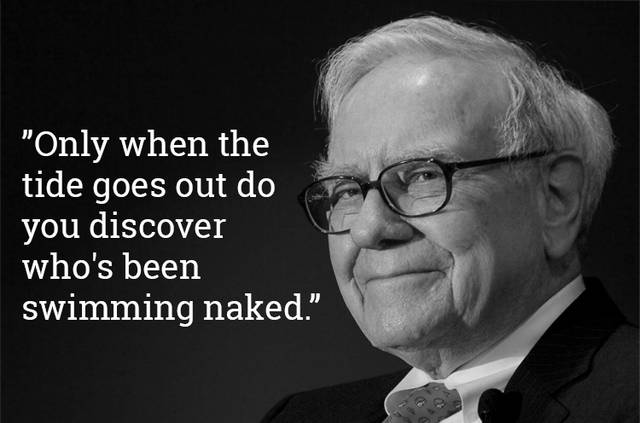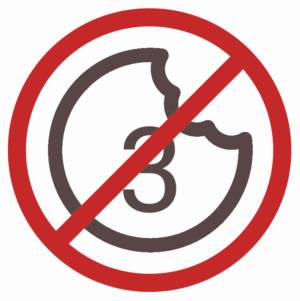The pandemic has affected consumer behavior, and e-commerce has really taken off. Most online stores have experienced significant growth over the past two years. So, you pat yourself on the back (management is in a good mood, and the drinks at the Christmas party are free).

But what really happened is that most surfed on the big tidal wave created by the pandemic. It's not the market shares that have increased; rather, they have "just" managed to maintain their position in a rapidly growing market.
When the tide now recedes – what happens then? Maybe it will be like the American investor Warren Buffet says:
– "Only when the tide goes out do you discover who's been swimming naked."
And maybe some of the Norwegian and Swedish online stores just surfed along? Recently, we've seen some news on this topic, and certain online stores have lost on the stock market. And if that's the case, what is the next step?

Maybe the time has come to shift focus from acquiring new customers (conversion) to retaining existing customers (retention). It may sound a bit strange that we think this way – Conversionista is known for being specialists in conversion optimization. But our job is to optimize the results of our clients' online businesses, and this is where retention comes into play. We can't just focus on conversion and new customers.
Research shows that it takes at least six months to form a new habit. And now we've had almost two years, so it should be fine, right? But you also need to understand that there is a difference between forming a new habit and maintaining a habit. Much like there is a difference between quitting smoking and continuing not to smoke (for the rest of your life).
We have had the honor of having Nir Eyal as a guest and speaker at Conversion Jam. Most recently, a couple of months ago. You can find the recording of the conversation here. Nir is one of the world's most prominent authors and inspirers on the subject of behavior change.

His model – Hooked – shows the elements you need to work on, and in what order, to create long-term behavior change.
The first element is "triggers" – events that trigger a behavior. These can be both external triggers – "I see the toothbrush on the sink, so I should brush my teeth" and internal triggers – "I'm bored, so I'll scroll through Instagram."
The next element is reward – what positive experience can you offer as a direct effect of performing the behavior? Did you know, for example, that toothpaste wasn't a big hit until someone thought of adding the mint flavor that gave that fresh taste in the mouth afterward?
So now your task is to think about what triggers you can use to get your customers to come back and what rewards you can give them.
Buy the book Hooked here.
Another factor to consider is that your customers may have formed new habits, such as shopping for groceries online, but that doesn't necessarily mean they shop only with you. When shopping for groceries online for the first time, they might choose brands they already know well, like Rema 1000, Meny, and Kiwi. A new habit is formed. But after a while, their field of vision expands – they are ready to change or form new habits. That means shopping with one of your competitors?!
So now it's time to show what you're made of. Think about how you can retain the new customers you gained during the pandemic.

Collin Crowell from Kameleoon presented an interesting thought during CJAM 2021: Many worry that it will be harder and more expensive to acquire new customers due to all the new privacy restrictions and the phasing out of third-party cookies. Collin believes that digital marketing has long been doped due to excessively low prices for, for example, retargeting. Now that it is becoming much more complicated and expensive, companies will finally be forced to focus on really taking care of their customers. Great!
Watch the conversation with Collin here
You might agree so far, but it's always easier to talk about WHAT you should do than to actually come up with HOW to do it. So let's take a look at some concrete things you can do now that you're back at work.
Email marketing is the ugly duckling of digital marketing. Unsexy, old school, not something agencies can make money on. But those who are good at email marketing know how incredibly effective it can be.
So one of your New Year's resolutions might be to revise your email marketing.
In most other channels, you usually work on developing new campaigns and offers, but since email is considered the ugly duckling, we often let it run its course without thinking much about it. There are probably many things you can change.
For me, one of the most inspiring speakers during CJAM was Terry Pierrelli, who talked about the topic "Growing your insights garden". In short, his presentation was about how to build your own internal database with customers and prospects where you get permission to contact the customer again to ask questions about services, products, product development, or whatever you want to ask your customers about.
Watch Terry's presentation here.
"If we ask unengaging questions, we get unengaging answers."
I think most of the questions and feedback companies often ask us are incredibly uniform and unengaging.
- "Your opinion is important to us."
- "What did you think of your last visit?"
- "Can we ask you some questions about your last purchase?"
Have you heard it before?
Here is my hypothesis:
– If we ask unengaging questions, we get unengaging answers.
What Terry did, however, was to make sure he got the opportunity to ask questions that go deeper into the customer experience. And then we can shift focus from
– "What did you think of the last experience?"
to
– "What is it really like to be a customer with us? What can we improve on? Yes, what can we do completely differently?"
The only limit is your imagination.
AND
These customers can also be invited to perform usability tests to observe their actual behavior with your digital products and services instead of just listening to their opinions and views.
Let's summarize:
To achieve this change, you need to do the following five things: